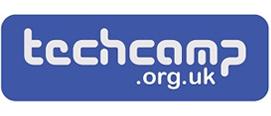KS2: programming, monitoring and controlling systems
This list provides resources for using programming and control systems in your D&T lessons. This list supports learning about electrical systems including using Crumble software in projects and using control mechanisms that link to science topics. There are lots of ideas for developing skills used in D&T through focussed practical tasks, so children are able to apply these techniques to the designs that they make. The resources provide opportunities to explore different electrical systems looking at the materials they are made from, how they are joined together and how they work. There are a range of authentic contexts for children to design, make and evaluate their own designs and make any modifications they feel are needed to make them suitable for the purpose and audience that they have been designed for.
- ALL
- Teacher guidance
- Presentation
- Activity sheet
- External link
- Other
Teacher guidance
Crumble Getting Started Guide
The Crumble “Getting Started” guide includes an overview of the Crumble software and a step-by-step guide to writing your first program. It also covers:
- Sparkle control
- Motor control
- Using inputs (digital and analogue)
- Using variables and maths in your programs
Programming a buggy with Invent!
This collection of resources can be used to create a roving buggy, when combined with either a Crumble Controller buggy kit or Invent! starter pack. The resources include instructions for programming your buggy, activity mats for students to use for their programming challenges, pupil worksheets to guide students through the programming challenge and teacher notes to support teaching the full programme of work (6 units). Students will need access to the equipment listed in the resource to participate, including sensors, motors and the programmable controller.
Creating a Timing Mechanism for Running Races
This case study looks at how children in science designed a timing mechanism that could be used in PE. Children used their timer to record the time taken to run short distances. This information was recorded on a spreadsheet which updated the childrens' times as they improved and automatically awarded points. This is an activity idea on how one school designed and made timing mechanisms for different purposes, it is not a detailed lesson plan.
What Message Will Your Billboard Send?
This resource refer to the previous curriculum, but still contains lots of good ideas for a D&T project. Children work in groups to design and make a moving billboard for a specific purpose within their school or classroom.
The project gives children the opportunity to apply what they have previously learned about computer control
During this activity, children will:
* generate ideas for a product after thinking about what it will be used for
* mark, measure, cut and join materials with increasing accuracy
* use a variety of tools with precision and care
* use gears to provide a transmission system
* use control software and a control interface box to control a motor and lights
* use input from sensors to monitor events and respond to them
* use to produce good quality graphics
* work as a group.
Presentation
Mechanisms: Robot Building
These activities use 'mechanical kangaroo' or 'mechanical horse' model robot kits. These kits allow children and parents to explore mechanisms containing levers, cogs, electric motors, batteries, switches and springs.
The models can be used to attempt a series of challenges.
Activity sheet
Classroom Sound Monitor
This cross curricular activity includes science content from Year Four of the primary curriculum. It introduces programming and control, linked to the outside world through sensors - in this case, the computer's built-in microphone or a peripheral microphone. Programs are written using Scratch (online or offline) after a short design activity - some knowledge of Scratch is advantageous. Links to physical computing devices, such as Lego WeDo, are highlighted. Extension activities include the use of variables to hold threshold values for triggering events dependent on volume of noise. Teaching notes are included suggesting a range of possible routes of development. Further ideas for different year groups may be found here.
Designing Using Computers at Key Stage 2: Parking Cars
One of the trial units from the Nuffield Primary Solutions in Design and Technology. Children design a supermarket car park to a detailed design specification. This task could be linked to geography local study, loking at the the varying needs of the people using a car park. This activity provides an opportunity to use the computer as a design
tool to help design an amenity which it is not feasible for them to actually make.
External link
Makey Makey resources
Lots of great ideas for using Makey Makey to create game controllers, invent musical instruments and much more. Creating a banana piano is a fun one to try. There are resources, links to apps and lots of how to guides and blogs all about Makey Makey.
Other
Crumble Card Buggy
This resource provides instructions for building a card buggy and creating a sample programme for your crumble board. You will need motors, a battery pack and connectors to complete the project.
Control freak for Crumble
A wide range of projects where children can use the Crumble software to write their own code and enable it to control lights within their designs. Activities include making sparkles light on a Christmas tree, creating constellations, fireworks and a lighthouse simulation. These activities have been created with a secondary audience in mind, but the ideas could be adapted for use in primary. Though children will need to understand the basics of Crumble before they start.







